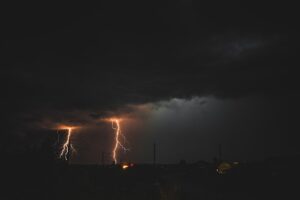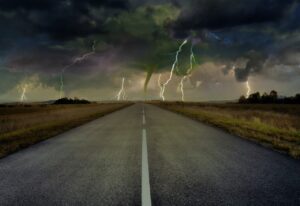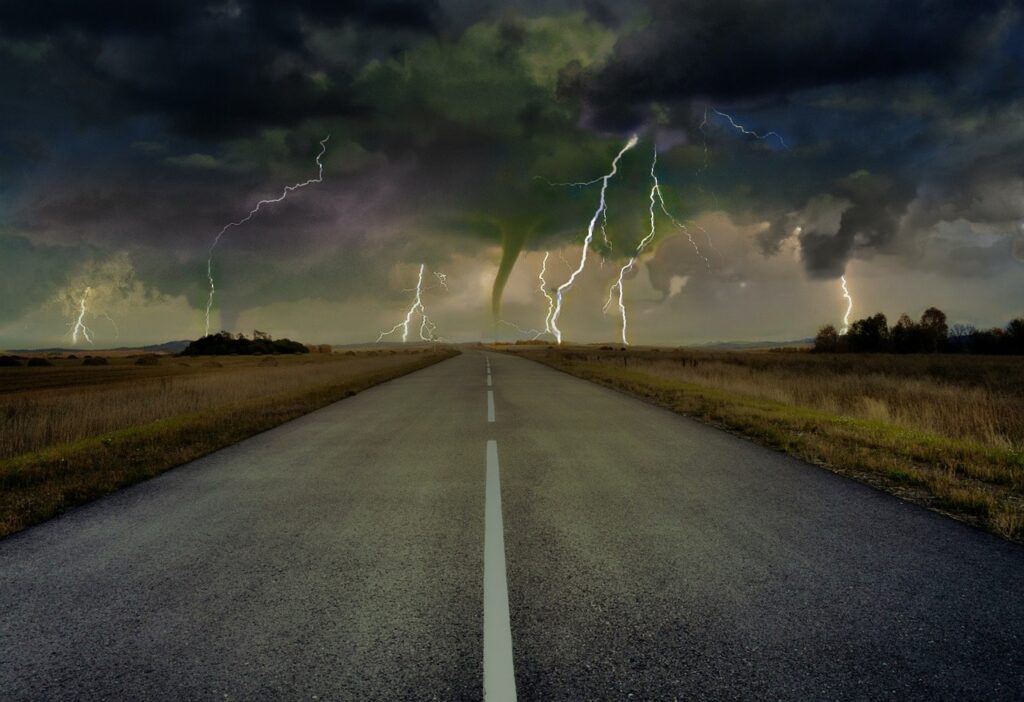Weather in the springtime can be unpredictable. Severe weather hits unexpectedly and the risk of injury and weather-related death increases. With this in mind, today let’s focus on the protection of your home.
As the weather warms after winter, the likelihood of a range of potentially dangerous weather events rises, such as thunderstorms, rainstorms, floods, landslides, tornadoes, dust storms, and firestorms. And for those of us in fire-prone areas, fire has become a year-round concern.
Flooding is a risk I’ve faced since I was a child. Living between two rivers, sandbagging was a familiar term. In those days, thinking about flood insurance didn’t cross my mind. That’s changed!
When was the last time you really read your homeowners, condo, and/or rental insurance policy to understand what is and isn’t covered? If you own your home, knowing what’s likely not covered will help you understand what’s at stake, in case. Motley Fool affiliate The Ascent provided a good overview for us today.

Image by István Bogdan from Pixabay
Flood Damage
A typical homeowners insurance policy will not provide coverage for water damage resulting from anything nature-related. While insurers might pay if, say, a refrigerator water line breaks and floods the basement, standard policies won’t provide protection from loss if floods happen due to natural causes, such as a hurricane.
Homeowners who live in a flood zone or who fear their house might flood should look into the National Flood Insurance Program run by FEMA. This program can offer affordable coverage that picks up the bulk of expenses for losses if a flood does happen.
Mortgage lenders usually require flood insurance for those who live in flood zones. But even cash buyers don’t want to pay out of pocket to rebuild if all is destroyed. Buying flood insurance can help ensure that doesn’t happen.
I called my insurance company after a tropical storm arrived in Southern California to ask about flood insurance. They suggested I look into FEMA to learn about different options.
Mold
Insurers generally exclude any problems in a home caused by negligence or resulting from routine wear and tear. Mold is usually one of those excluded causes of damage. Check your policy to see how they handle mold.
An insurer might pay if, for example, a fire started and was sprayed with water to put it out, and the water ended up causing mold growth. But in most cases, mold happens when homeowners don’t address water-related issues over time. Mold remediation repairs out of pocket can be costly.
Pests
Pests are a pest, especially after storms. The entry of insects, rats, mice, or other small animals is usually seen as “preventable”, and homeowners insurance generally won’t cover the damage these nuisance pests cause. Check your policy!
Up Next Hurricanes
Hurricane season begins in June. In most states, standard homeowners policies cover damage caused by wind, including hurricanes. But if you live in a high-risk coastal state, you might need to buy separate windstorm insurance, either through your insurance company or a state-run insurance pool. Check your policy!

Dot your i’s and Cross your t’s
Weather changes in recent years have taught us the importance of protection. The U.S. has sustained 377 weather and climate disasters since 1980 where overall damages/costs reached or exceeded $1 billion (including CPI adjustment to 2024). The total cost of these 377 events exceeds $2.670 trillion.
In 2024 (as of March 8), there has been 1 confirmed weather/climate disaster event with losses exceeding $1 billion to affect United States. This was 1 severe storm event. This event resulted in the deaths of 3 people and had significant economic effects on the areas impacted. The 1980–2023 annual average is 8.5 events (CPI-adjusted); the annual average for the most recent 5 years (2019–2023) is 20.4 events (CPI-adjusted). Between 1980 and 2024, there have been 187 Severe Storms, 44 Flooding, 31 Drought, 62 Tropical Cyclone, 22 Wildfire, 22 Winter Storm, and 9 Freeze billion-dollar disaster events in the United States (CPI-adjusted).
Preparing for weather events is a year-round activity. Check your deductible, check your policy for exclusions, and keep vigilant to protect yourself as best you can.
Proactive action is the way to go! Better to be overprepared than not prepared is my motto! To consider some things to consider earlier vs. later, my book The Living Planner (What to Prepare Now While You Are Living) is a resource for you. Here is a direct link to my shopping cart. Check it out HERE .
For those who prefer to access information via an online portal, I’ve created a step-by-step 12-Module DIY method: Check it out HERE. Send me an Email or Message me if you have any questions. For additional information about my work check out @ The Living Planner or @ The Living Planner.
Speaking of weather Mark Twain has a great quote for us today. “In the spring, I have counted 136 different kinds of weather inside 24 hours.” ❣️ Happy Easter, Lynn
#Can’tPredictCanPrepare #PlanfortheUnplanned

